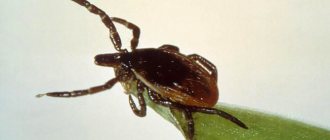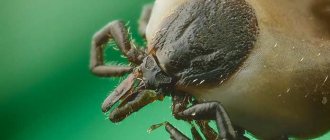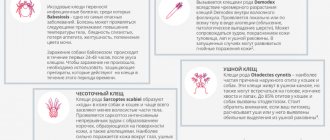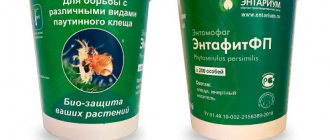Tick season has begun in Russia. Rospotrebnadzor named Izvestia 16 regions where they are currently most active. The agency warns that the epidemiological situation regarding tick-borne encephalitis this year will remain tense, requiring the use of serious preventive measures. Acaricidal treatments are planned for an area of more than 350 thousand hectares, including more than 56 thousand hectares in the territory of children's camps. And 1.5 billion rubles will be allocated for the purchase of vaccines.
You can't pull it out with pincers: the forest bloodsucker is out hunting again
How to fight a hungry arachnid and what does the lasso have to do with it?
"Active" regions
According to Rospotrebnadzor data obtained by Izvestia, the beginning of the tick activity season in 2021 was registered back in January-February in the Southern Federal District. The first bites were noted in the Republic of Crimea, Krasnodar and Stavropol territories. And in April, ticks woke up in 16 regions: Astrakhan, Rostov, Belgorod, Voronezh, Lipetsk, Kaliningrad, Sverdlovsk, Irkutsk regions, Khakassia, Buryatia, Tyva, Krasnoyarsk and Altai regions were added.
As of mid-April, there have been no cases of tick-borne infections yet (as was the case last year by this time). Rospotrebnadzor attributes the 15 episodes of borreliosis infection in Crimea mentioned in the media to last year’s infections.
Ticks-1
Photo: RIA Novosti/Alexander Kryazhev
Caught in pincers
A focus of encephalitis has been discovered in Moscow, but the territory of the capital is still considered safe
The supervisor noted that the number of reported cases of ticks attaching to people has decreased, and attributes this to the fact that the areas of acaricidal treatments have increased. However, this should not reassure Russians - Rospotrebnadzor predicts that this year the epidemiological situation with tick-borne encephalitis will remain tense and serious preventive measures will be required.
The largest number of tick-borne viral encephalitis (TBE) diseases in 2021 was registered in the Krasnoyarsk and Perm territories, Kirov, Novosibirsk, Kemerovo, Sverdlovsk, Vologda, Tyumen and Irkutsk regions. And tick-borne borreliosis - in the Sverdlovsk, Kirov, Moscow, Vologda, Novosibirsk regions, St. Petersburg, Perm, Primorsky and Krasnoyarsk territories.
Tick activity period
In the Moscow region, when the snow just melts and the sun warms up, nature wakes up. Along with it, ticks appear and their activity resumes. After overwintering on dry grass and leaves, ticks are hungry and begin searching for prey. They attack small rodents, hedgehogs, and hares. Animal breeders find them on dogs' fur, often already embedded in the skin.
Tick activity reaches its peak by the beginning of May, when summer residents and those who like to relax in nature during the holidays travel to the Moscow region. Ticks prefer dry weather and moderately warm temperatures; as soon as the number of hot days increases, their activity declines and resumes only at the end of summer, when it becomes cooler. Caution is necessary throughout the warm period, but especially during the peak activity of ticks, which occurs in May and June.
period of tick activity by month
Ticks are blind, but they sense their prey several meters away with their olfactory organs located on their paws. They tenaciously grasp the fabric of clothing or the fur of an animal and quickly crawl upward to reach the delicate skin on the neck or shoulders. It is impossible to determine visually how dangerous a tick is; this requires laboratory testing. It is necessary to take precautions during the period when ticks are active in order to protect yourself from becoming infected with dangerous infections.
The most terrible consequences of Lyme disease (borreliosis). If a tick stays in a wound for a long time and sucks blood, the probability of penetration of an infectious agent increases many times over. Lack of treatment makes a person disabled, and deaths are possible. There is no vaccine against borreliosis.
You can get tick-borne encephalitis if you are bitten by an ixodid tick. Medical assistance should follow no later than 96 hours from the start of the tick’s penetration into the skin. The doctor administers immunoglobulin to prevent unwanted health effects.
Potentially hazardous areas in the Moscow region
Rospotrebnadzor annually monitors the situation in the regions of the country. A map of the areas of the region is drawn up, where the places of tick activity are marked.
In the Moscow region, dangerous areas are identified in 2021 based on the degree of parasite infestation and are under the control of sanitary services. Ticks infected with borreliosis live in all eastern regions of the Moscow region, including Sergiev Posadsky in the north and Ozersky in the south of the region. Ixodid ticks, which are dangerous due to their bite, were also found in the Mozhaisk and Naro-Fominsk regions. This year, encephalitis tick bites were recorded in the Istra and Domodedovo districts.
Hare–tick–man
Night mosquito: Russians are afraid of contracting HIV from blood-sucking mosquitoes
A Rosstat survey showed that citizens are poorly aware of the methods of transmission of this infection
Rospotrebnadzor clarifies that in total there are 48 territories in Russia that are endemic to viral encephalitis. According to the list compiled by the federal service at the end of January 2021, 19 regions are recognized as completely endemic (among them the most popular among tourists are the Vologda, Kaliningrad, Leningrad, Novgorod regions, Sevastopol, the Altai Republic and the Altai Territory). In another 29 regions, the virus has spread to parts of the territory.
Doctor of Biological Sciences, Professor, Head of the Laboratory of Arbovirus Biology, Institute of Poliomyelitis and Viral Encephalitis named after. M.P. Chumakova Galina Karganova explained to Izvestia that regions in which the virus circulates are considered endemic: that is, ticks infect animals, and they transmit the pathogen to other ticks. And in this territory, cases of the disease have been recorded for several years in a row. The boundaries of endemic regions are expanding due to animal migration.
Ticks
Photo: RIA Novosti/Igor Zarembo
There are pseudo-foci where the virus is regularly brought in. So, Muscovites get infected in other places, but get sick at home. Therefore, diagnosis and prevention need to be carried out in the capital, although this is not an endemic region.
Earlier, Izvestia wrote that in 2021, a case of a human being bitten by an encephalitis tick was recorded in the capital; in 2016, there was also one victim.
Plaque is normal
Should residents of other regions be wary of the “Voronezh” mosquito invasion?
Doctor of Medical Sciences, professor, corresponding member of the Russian Academy of Sciences, epidemiologist Mikhail Mikhailov explained to Izvestia that ticks become active with the onset of heat. And global warming leads to an increase in the activity and distribution area of these arthropods. This phenomenon has been observed in recent years. And the problem will remain acute.
Treatment for years
The country's biggest peak in tick bites was in the late 1990s, when there were 10,000 reported cases per year. And for the last four to five years, about 2 thousand cases per year have been recorded in Russia. The fatality rate is approximately 2.5%.
“Rehabilitation after tick-borne encephalitis can take years,” said Galina Karganova. “Sometimes the disease leads to paralysis and people become disabled. About a third of those who have recovered have residual lesions of varying severity. And every year the number of such people increases simply due to the cumulative effect.
According to Mikhail Mikhailov, the problem with the incidence of tick-borne encephalitis could be solved by more widespread vaccination of the population.
In Russia, mass vaccinations against TBEV are currently only carried out in endemic areas.
Ticks
Photo: RIA Novosti/Igor Zarembo
Galina Karganova clarified that since the vaccine is inactivated, booster vaccinations are required. Tick-borne encephalitis is very rarely reported in vaccinated people—only in about 5% of cases—but the disease, as a rule, is mild.
Bloodlust
How to protect yourself and your pets from ticks
The incidence of borreliosis (Lyme disease) is higher than TBE, but its mortality rate is not as high. However, borreliosis causes complications in the joints, heart, eyes and other organs. There is no vaccine for it, but it can be treated with antibiotics.
Ticks carry not only encephalitis and borreliosis. In Russia, from these arthropods you can become infected with tularemia, babesiosis (usually dogs get it, but sometimes the disease is transmitted to weakened people), anaplasmosis, ehrlichiosis, rickettsiosis and many other diseases. The most dangerous of them are encephalitis, borreliosis, anaplasmosis and rickettsiosis. The latter is especially common in Siberia.
— The severity of the disease depends, among other things, on the dose of the virus that a person received from a tick. The dose depends on the duration of suction. For example, to get borreliosis, you usually need to “feed” the tick for more than 12 hours, explained Galina Karganova.
Rospotrebnadzor named the best way to protect against tick-borne encephalitis
What should I do if bitten by a tick
First of all, you need to remove the tick either at the nearest emergency room or with your own hands. What exactly should you do if you are bitten by a tick, and there is no way to quickly get to the emergency room?
- Wear disposable gloves or take a clean piece of gauze folded in several layers or a cotton pad.
- Gently, slowly rotating around its axis, pull the tick out of the wound, holding it as close to the head and surface of the skin as possible with your fingers, tweezers, thread or a special tick remover (sold at the pharmacy).
- Disinfect the wound, for example, with hydrogen peroxide.
- If there is a black dot left in the wound - this is the head of the tick, it needs to be treated with iodine and not picked, the skin will soon reject it on its own.
- Place the tick in a test container or similar sealable container, along with a cotton pad or piece of gauze lightly moistened with water.
It is important not to crush the tick when removing it. This is necessary to submit the pest for analysis to the laboratory, which must be done immediately after you have removed the pest. Ticks are accepted for analysis by commercial laboratories, for example, Gemotest or Invitro, or the Centers for Hygiene and Epidemiology of Moscow
or
Moscow region
.
note
At the moment, analysis of ticks for the presence of pathogens of encephalitis, borreliosis, anaplasmosis and ehrlichiosis is always carried out for a fee in all laboratories.
If laboratory analysis reveals causative agents of any diseases in the tick, you can begin treatment even before the first symptoms appear, which will significantly increase the chances of a mild course of the disease and a quick recovery.
What to do with pets
The same goes for pets. Cats tolerate tick bites more or less easily and without consequences compared to dogs, however, it is advisable to take care of protecting your pets even before going to the countryside or going out into nature. Consult with your veterinarian about the best way to protect your animal in your particular case. It also makes sense to contact a veterinarian after a bite, especially if you observe changes in your pet’s behavior and well-being. The special risk group includes all dogs without exception, purebred, very young or old animals, as well as cats and dogs with chronic diseases.











